This post may contain affiliate links. Please read our disclosure policy.
Are you a bubble tea lover? Bring your bubble tea game to another level by making your own instead of buying one at bubble tea shops.
The first step is learning how to make boba pearls. Although tapioca is commonly used to make boba pearls, we will try a different ingredient in this recipe in case you don’t have tapioca flour or starch.
Learn how to make boba without needing tapioca with my easy recipe guide.
- What Is Boba?
- What Are Boba Or Tapioca Pearls?
- Are Boba (Tapioca) Pearls The Same As Sago?
- Is Boba Healthy?
- How To Store Boba
- Tips For A Successful Boba
- What You Need To Make Boba
- Steps To Make Homemade Boba
What Is Boba?
Boba is short for bubble tea. It is also popularly called bubble milk tea, boba tea, and tapioca milk tea. Aside from being a drink, boba is also referred to as the deep brown balls in the drink.
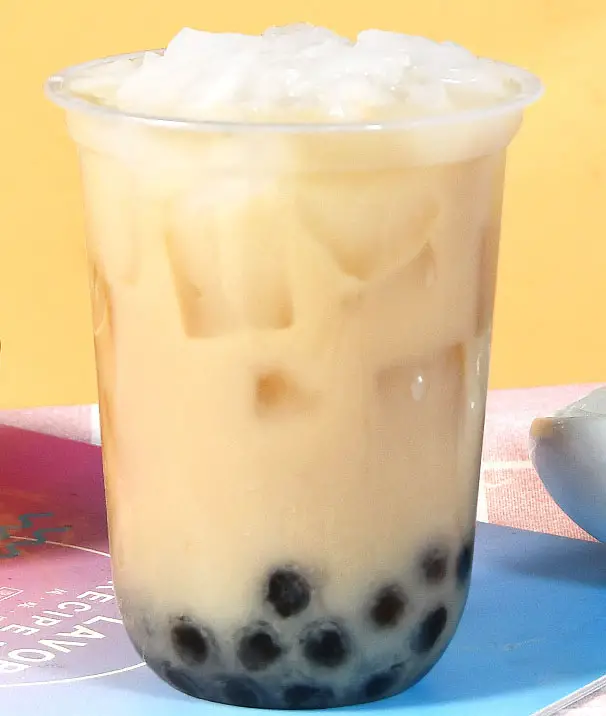
You may also know these balls as boba pearls or tapioca pearls. Boba pearls are typically dark brown, sweet, and syrupy. It adds a delightful taste and fun experience to milk teas and desserts.
Boba milk tea is generally made with different kinds of tea, such as black tea, oolong tea, or white tea. What makes the drink sweet is the added sugar and toppings, including boba pearls, jellies, lychee, and fruits. Of course, let’s not forget the milk base for the rich flavor.
In this recipe, we are going to make boba milk tea with homemade boba pearls, sugar, black tea, and milk.
You will learn how to make homemade boba pearls, from boiling the sugar to making the dough. You can further customize the boba milk tea with your preferred sweetness level and choice of milk.
What Are Boba Or Tapioca Pearls?
Boba pearls are often called tapioca pearls. These pearls are generally made from the refined tapioca starch of cassava root, a tuberous root plant in South America and a native plant in Brazil. It is generally white in color since it takes its natural color from the starch.
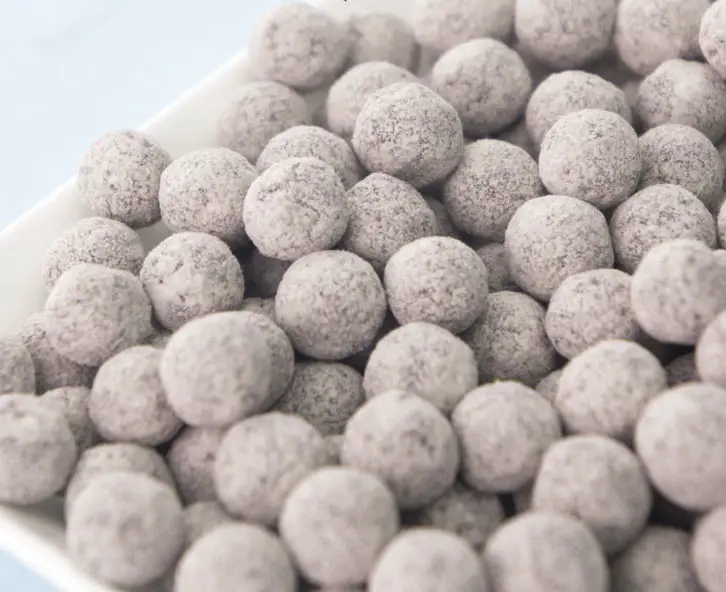
However, boba pearls are brown because of the added sugar when making the pearls. The consistency of boba pearls is soft and chewy, with a bit of resistance when bitten. Moreover, it is sweet with a hint of caramel because of the added brown sugar.
Boba pearls have various forms, including popping or bursting boba, chewy boba, mini boba, and crystal boba, to name a few. You only need three ingredients to make boba or tapioca pearls: brown sugar, water, and tapioca starch. Read my recipe for Homemade Tapioca Pearls if you want to learn how to make pearls with tapioca.
However, in this recipe’s version, we won’t be using tapioca starch to make the pearl.
As a replacement, we use glutinous rice flour, also known as sweet rice flour. It is derived from long and short-grain glutinous sticky rice. It is naturally gluten-free and becomes sticky and chewy when heated, just like tapioca starch.
Are Boba (Tapioca) Pearls The Same As Sago?
Short answer – No, they are not the same. Tapioca pearls are often mistaken for sago. The fact is, sago is a different kind of pearl that is made from the unrefined starch of a sago palm tree.
Sago pearls are generally more expensive and limited. It takes time to make them because a sago palm tree needs about 10 years to develop in order to get the starch. Thus, the boba pearls made from tapioca and other types of starch are created as the cheaper version and a more accessible alternative to sago.
Boba pearls made from tapioca are usually referred to as the imitation of “real” sago pearls. Read my guide Sago Vs. Tapioca Pearls to learn more about the differences in size, texture, taste, and many more.
Is Boba Healthy?
Whether for a dessert pairing, a refreshing cold drink for a hot day, or just something sweet, boba milk tea has been a popular choice for many. No matter what time of day, it is the perfect drink to quench your thirst. The question is – Is it a healthy drink?
Let’s break down the ingredients and check their nutritional benefits. In this recipe, we use the following:
- Brown sugar
- Glutinous rice flour
- Black tea
- Milk
Brown sugar gives you energy, carbohydrates, calcium, and potassium. For every 100g of brown sugar, you consume 380 kcal of energy, 98.1g of carbohydrates, 83mg of calcium, and 133mg of potassium. However, you must watch how much sugar you take since excessive sugar intake is a potential health risk.
Glutinous rice flour has 80.1g of carbohydrates, 6.69g of protein, and several vitamins and minerals. It is a great source of zinc, fiber, and Vitamin B-6. Moreover, it has been known to aid people with diabetes, boost metabolism, and reduce inflammation in the body.
Black tea has a long list of health benefits, from promoting a healthy heart to reducing the risk of stroke. It is also considered a drink to enhance focus and reduce blood sugar levels. However, black tea contains caffeine, but much less than coffee though. Thus, you must also be careful not to drink too much black tea because of its caffeine content.
Milk will have varying nutritional benefits, depending on the type of milk you use. For instance, if you want milk with lower total fat and saturated fat, go for plant-based such as soy milk. Soy milk is a healthier option than cow’s milk since it has 0mg of cholesterol while giving you more calcium and protein. It’s also a great option for those who are lactose intolerant. Nevertheless, it’s up to you which type of milk you prefer.
How To Store Boba
Boba milk tea is best consumed right away. However, you can keep it in the fridge for up to three days as long as it is kept in a sealed container or jar. Moreover, I recommend removing the boba pearls from the drink and storing them in a separate container.
If the pearls are kept in liquid for too long, you risk ruining the overall quality of the drink and the texture of the pearls. Boba pearls should be consumed within the day for the best quality and texture since it tends to soften and lose their chewiness over time. If you made a large batch of boba pearls, you can still store it in the fridge or freezer.
- Uncooked boba pearls: Store in an airtight container lined with parchment paper. The pearls should be placed on a single layer and not on top of each other. Store it in the fridge for three days or in the freezer for longer shelf life.
- Cooked boba pearls: Store in the fridge for up to three days in an airtight container. You can also keep it in the freezer, but it may affect the quality the longer it stays there.
Keep it fresh by combining the ingredients only when you are ready to drink the boba milk tea. If you have leftover boba pearls, instead of storing them, you can use them as a topping for Mango Tapioca Pudding or Mango Pomelo Sago Dessert 楊枝甘露. Aside from boba milk tea, the pearls can also be added to Winter Melon Tea with milk.
Tips For A Successful Boba
Making boba milk tea is quite simple since you just combine the main ingredients together. What ultimately defines the outcome of this recipe is how you made the boba pearls. The consistency and taste of boba pearls can be affected by changes in temperature, cooking time, and measurements.
The steps in making boba pearls are actually the most time-consuming part of this recipe. You have to boil the ingredients, mix, knead the dough, and shape them into balls. If you do not do each step correctly, it can also affect the results.
Not to worry, my tips and suggestions below can help you along the way. Here are some reminders for you to read before proceeding to the recipe instructions.
- Glutinous rice flour can only be mixed well into freshly boiled brown sugar and water. It will also activate the stickiness when heated. Thus, mixing in room-temperature brown sugar and water mixture will not work.
- The temperature can make your pearls firm, soft, or very soft. Medium-high heat gives you a soft exterior and a rubbery center, whereas high heat can make it really soft and chewy.
- The cooking time is also important in creating the consistency you want. You have softer pearls the longer it cooks, while you have firmer pearls the less time it cooks.
- When you mix the glutinous rice flour with the brown sugar water mixture, it will eventually form into a dough. The dough you want to make should be like play dough or clay that you can pull and knead. It is not too dry nor too soft. If it is too dry, add more water. On the other hand, if it is too soft, add more glutinous rice flour.
- Make sure you make even sizes of the boba pearls. In this recipe, we make balls from 1.5cm X 1.5cm cubes. If the pearls have different sizes, the cooking time for each size is different. When you cook uneven sizes together, some pearls may be firm, while some may be soft.
- Rolling the cubes one by one is a tedious process. I suggest rolling more than one cube in your hands to make it faster.
- When cutting the dough, I recommend using a stainless steel dough cutter or a simple plastic dough scraper. It should be clean without residue to avoid the dough from sticking to the dough cutter. In any case, you can still cut with a regular knife.
What You Need To Make Boba
It’s convenient to make boba at home with your common kitchen tools, such as a cooking pot for boiling, a spatula for stirring, and a dough knife or knife for cutting. The special ingredients you need from the store are glutinous rice flour and black tea if you don’t have one.
Kitchen Tools
- Cooking pot or pan for boiling
- Spatula for stirring
- Dough cutter or knife
- Chopping board
- Bowls for mixing
- Ladle strainer
- Tall glass or jar
Ingredients
Making Dry Boba Pearls
- 40g brown sugar
- 100ml water
- 200g glutinous rice flour (or added gradually until the dough is smooth for kneading)
Cooking Dry Boba Pearls
- 500ml water
- Cold water for rinsing
Assembling Boba Milk Tea
- 20g white or brown sugar (or adjust according to your desired sweetness)
- 20g black tea leaves
- 250ml milk
- Cooked boba pearls
Steps To Make Homemade Boba
The recipe is divided into three parts:
- Making Dry Boba Pearls
- Cooking Dry Boba Pearls
- Assembling Boba Milk Tea
The following detailed steps below will demonstrate how to make and cook dry boba pearls and assemble the milk tea drink. To get a better understanding, watch me make it with my short video guide on Instagram and Tiktok.
Making Dry Boba Pearls
In a cooking pot, cook on low heat the 40g brown sugar and 100 ml water and bring to a boil.
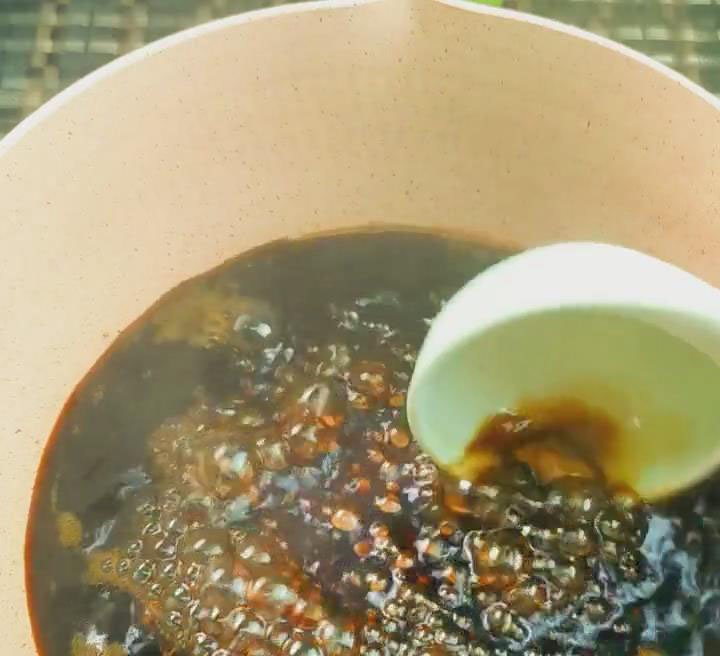
Once it boils, turn off the heat and add the glutinous rice flour while it’s hot. Do not add all at once. Add glutinous rice flour gradually and mix well until you have a smooth doughy consistency.
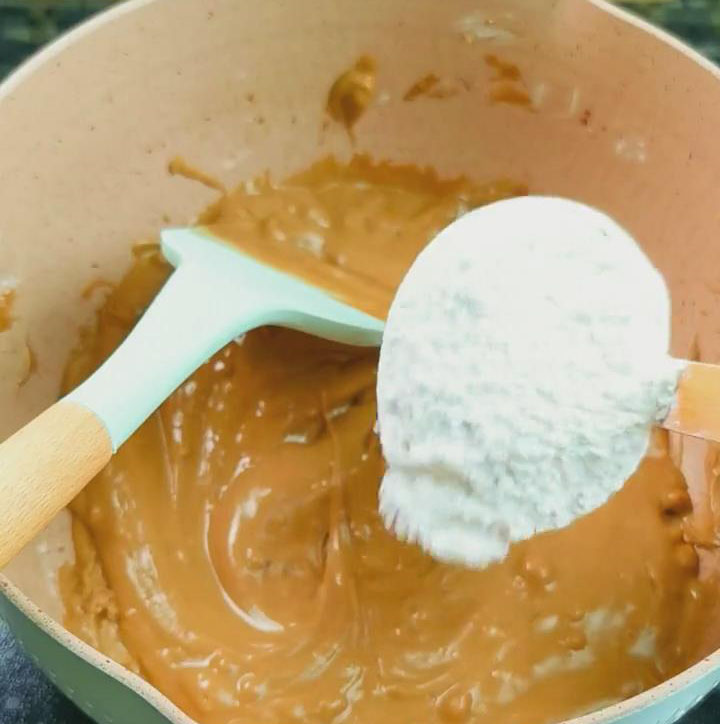
Mix the glutinous rice flour starch completely by folding and pressing the dough with your hand. You should be able to make a round smooth dough.

Then, sprinkle some glutinous rice flour into a bowl and let the dough rests for about 10 minutes.
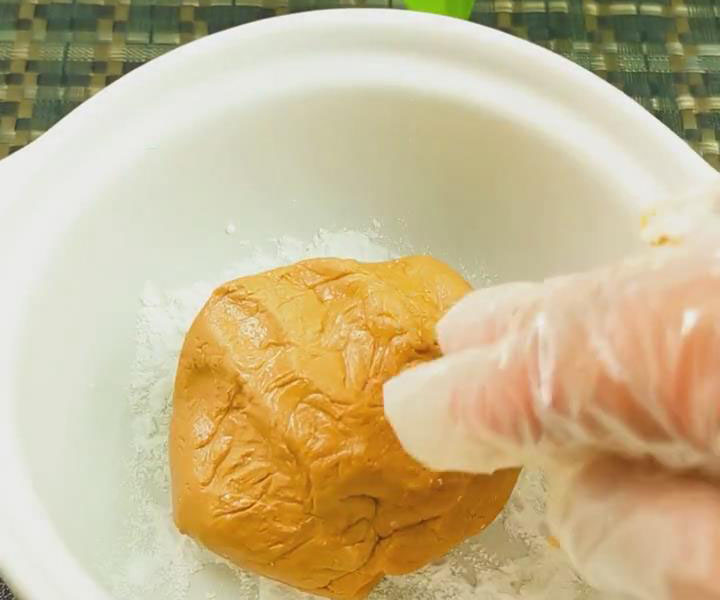
Put some glutinous rice flour on your chopping board as well before transferring the dough for kneading. This prevents the dough from sticking to the chopping board.
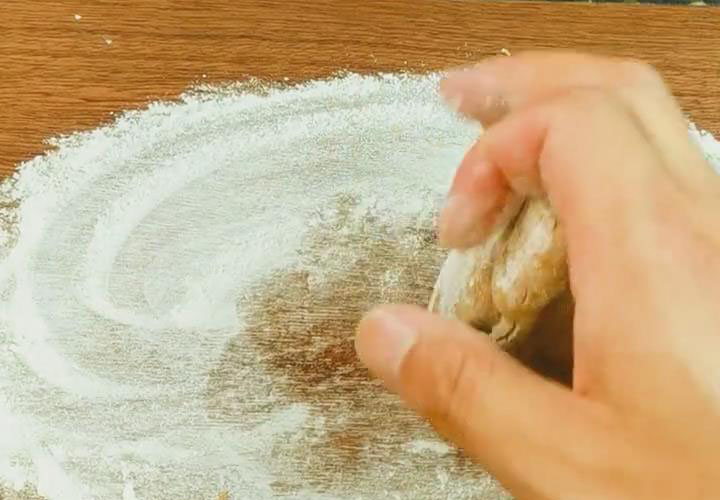
Next, knead the dough into long strips and then cut into small cubes, about 1.5cm X 1.5cm.
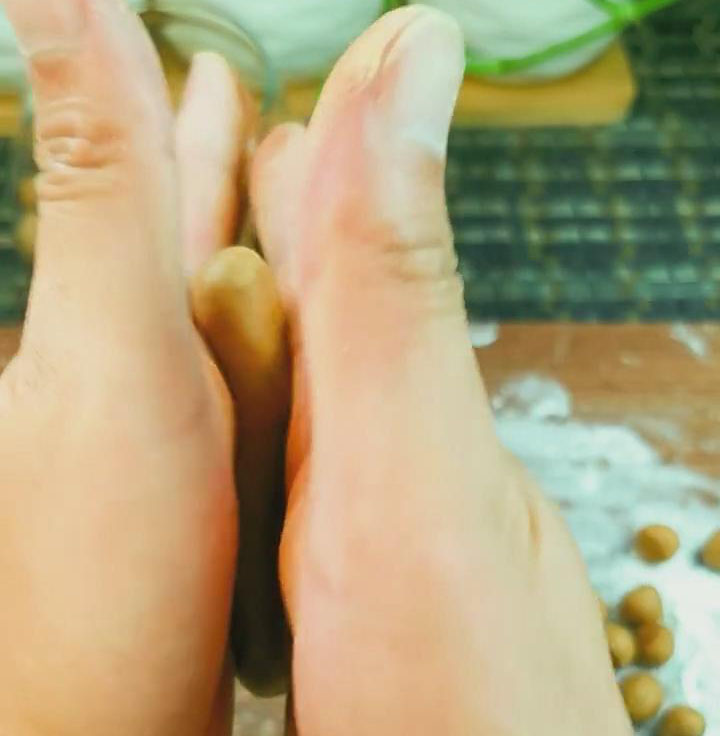
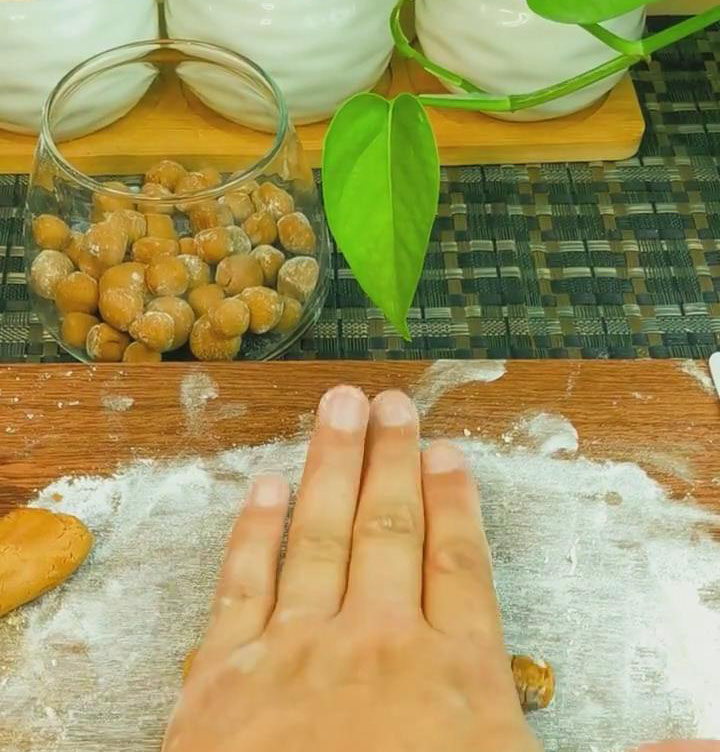
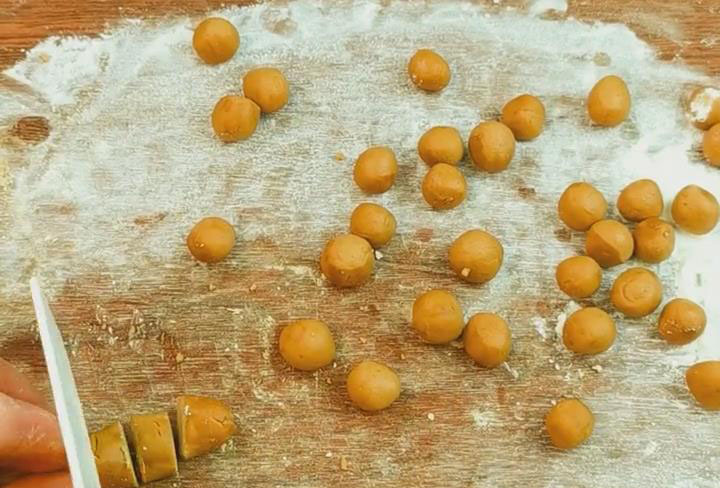
Afterward, roll the cubes in your hands to make small balls. After making all the balls, dust them again with glutinous rice flour to prevent them from sticking together.

Wait for the pearls to dry up. Once it dries, store the pearls in the freezer or refrigerator or proceed to the next step: Cooking Dry Boba Pearls
Cooking Dry Boba Pearls
Bring 500ml of water to a boil in a cooking pot. When it reaches a boil, add the dry boba pearls to the pot and cook on high heat for about 5 minutes. After 5 minutes, the pearls should be floating to the top of the water.
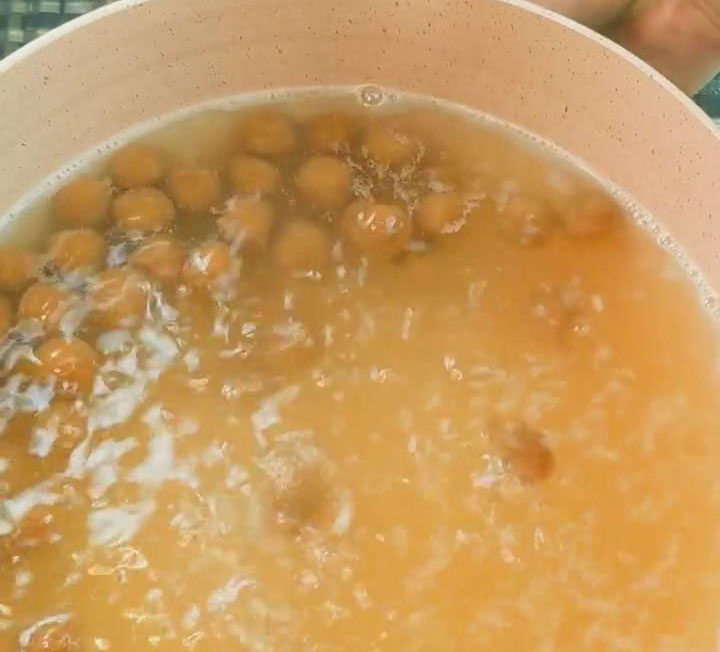
Using a ladle strainer, remove the soft and chewy pearls and strain. Then, rinse the pearls in a container with cold water. The cold water stops the pearls from cooking further and removes the starchy coating.
Assembling Boba Milk Tea
In a pan or pot, add 20g of sugar and cook on low heat until the sugar melts.
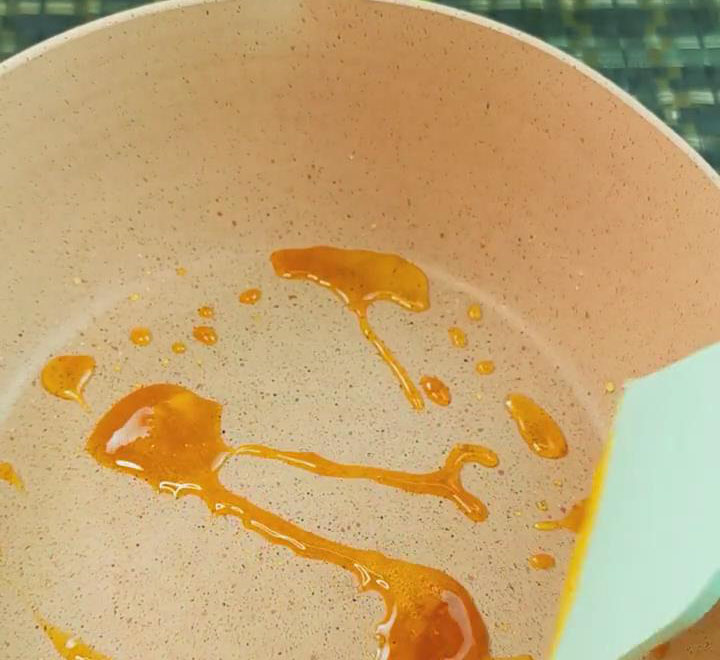
Then, add 20g black tea leaves and 250 ml milk.
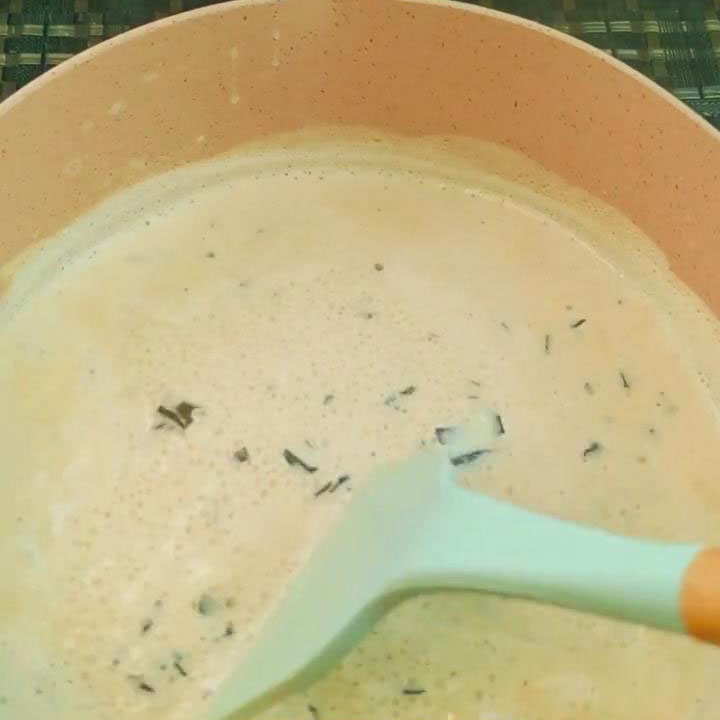
Cook on low heat and continuously stir until it boils. In a tall glass or jar, add the boba pearls and sieved milk tea.
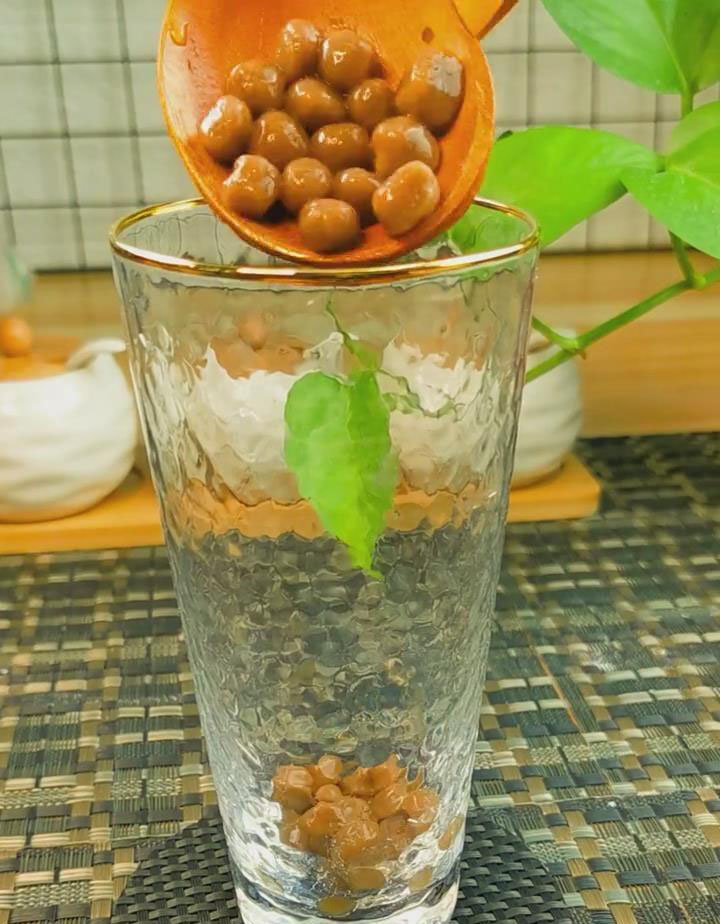
And Done! Enjoy the boba milk tea warm or cold over ice.
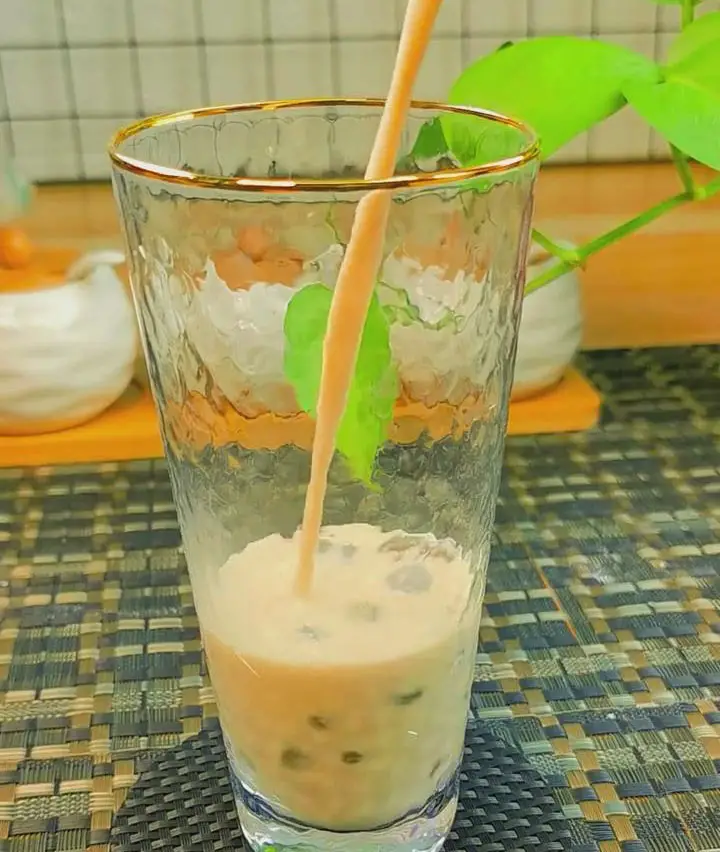
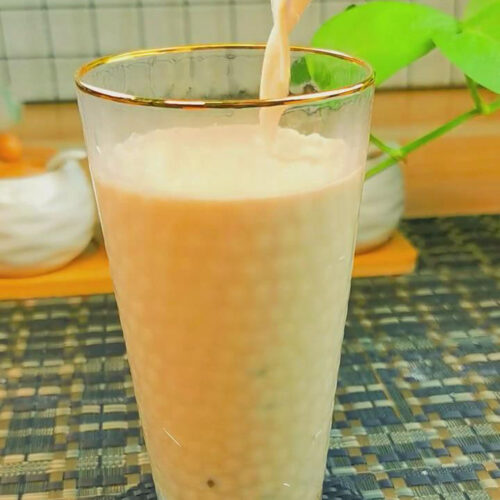
How To Make Boba Without Tapioca Starch
Equipment
- Cooking pot or pan for boiling
- Spatula for stirring
- Dough cutter or knife
- Chopping board
- Bowls for mixing
- Ladle strainer
- Tall glass or jar
Ingredients
Making Dry Boba Pearls
- 40 g brown sugar
- 100 ml water
- 200 g glutinous rice flour or added gradually until the dough is smooth for kneading
Cooking Dry Boba Pearls
- 500 ml water
- Cold water for rinsing
Assembling Boba Milk Tea
- 20 g white or brown sugar or adjust according to your desired sweetness
- 20 g black tea leaves
- 250 ml milk
- Cooked boba pearls
Instructions
Making Dry Boba Pearls
- In a cooking pot, cook on low heat the 40g brown sugar and 100ml water and bring to a boil.
- Once it boils, turn off the heat and add the glutinous rice flour while it’s hot. Do not add all at once. Add glutinous rice flour gradually and mix well until you have a smooth doughy consistency.
- Mix the glutinous rice flour starch completely by folding and pressing the dough with your hand. You should be able to make a round smooth dough.
- Then, sprinkle some glutinous rice flour into a bowl and let the dough rests for about 10 minutes.
- Put some glutinous rice flour on your chopping board as well before transferring the dough for cutting. This prevents the dough from sticking to the chopping board.
- Next, cut the dough into long strips and then into small cubes, about 1.5cm X 1.5cm.
- Afterward, roll the cubes in your hands to make small balls.
- After making all the balls, dust them again with glutinous rice flour to prevent them from sticking together.
- Wait for the pearls to dry up.
- Once it dries, store the pearls in the freezer or refrigerator or proceed to the next step: Cooking Dry Boba Pearls
Cooking Dry Boba Pearls
- Bring 500ml of water to a boil in a cooking pot.
- When it reaches a boil, add the dry boba pearls to the pot and cook on high heat for about 5 minutes. After 5 minutes, the pearls should be floating to the top of the water.
- Using a ladle strainer, remove the soft and chewy pearls and strain.
- Then, rinse the pearls in a container with cold water. The cold water stops the pearls from cooking further and removes the starchy coating.
Assembling Boba Milk Tea
- In a pan or pot, add 20g of sugar and cook on low heat until the sugar melts.
- Then, add 20g black tea leaves and 250ml milk.
- Cook on low heat and continuously stir until it boils.
- In a tall glass or jar, add the boba pearls and milk tea.
- And Done! Enjoy the boba milk tea warm or cold over ice.

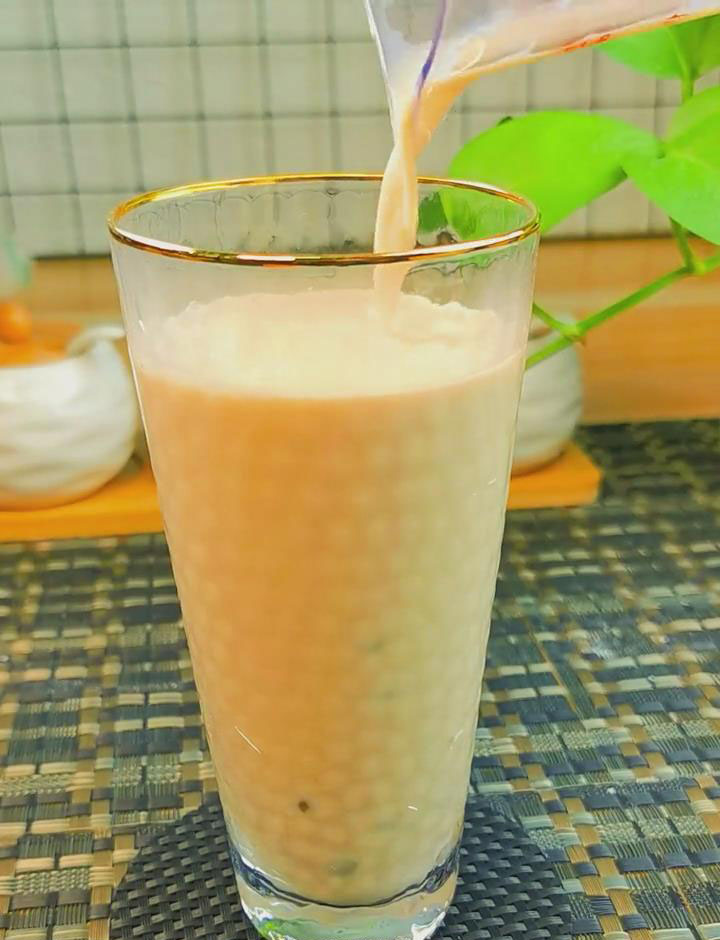
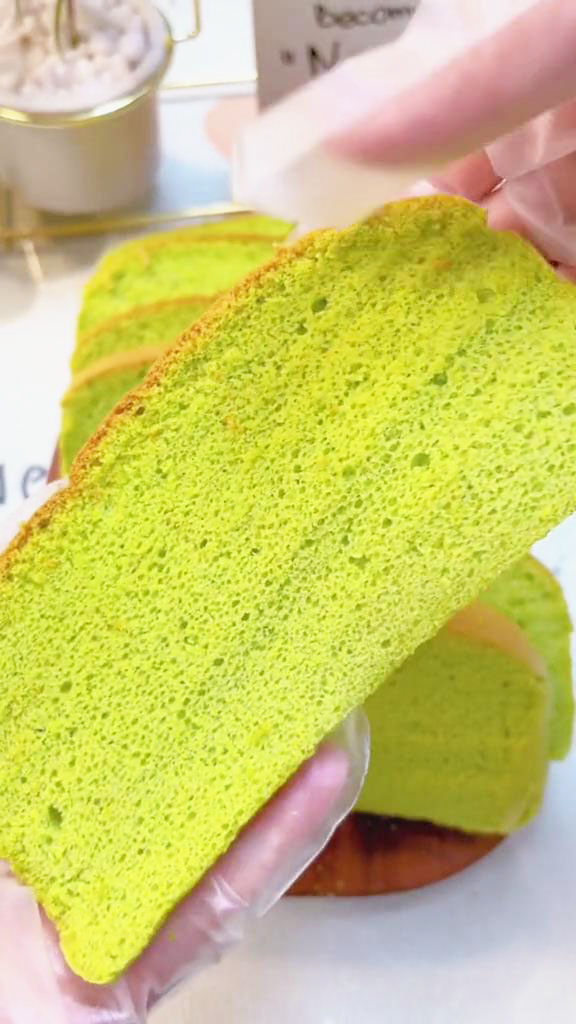

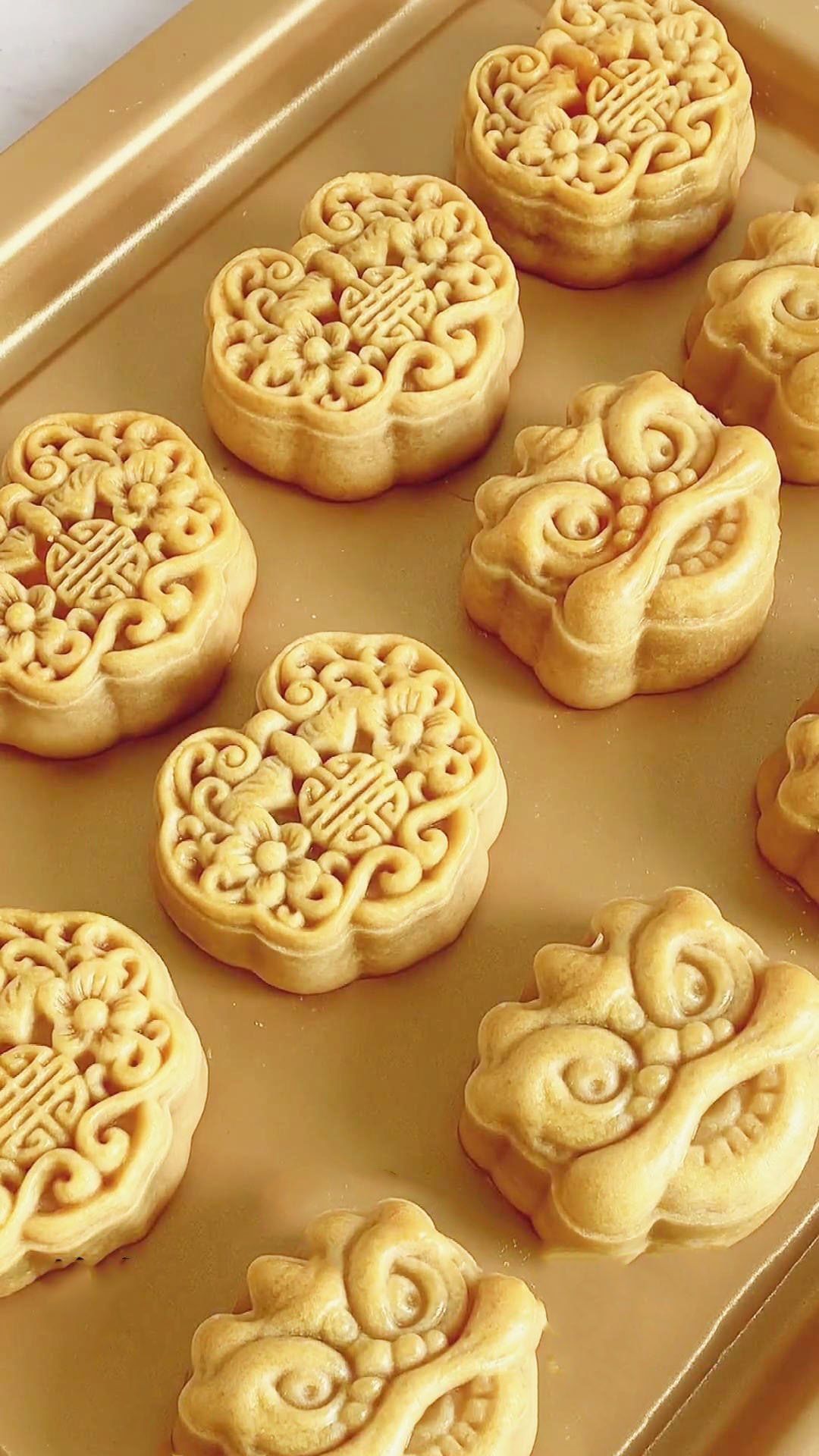
Hi, how long does it take for the pearls to dry? “Wait for the pearls to dry” is very vague….
Hi Milissa,
After dusting the pearls with glutinous rice flour, you can store them immediately without the need for additional waiting time.